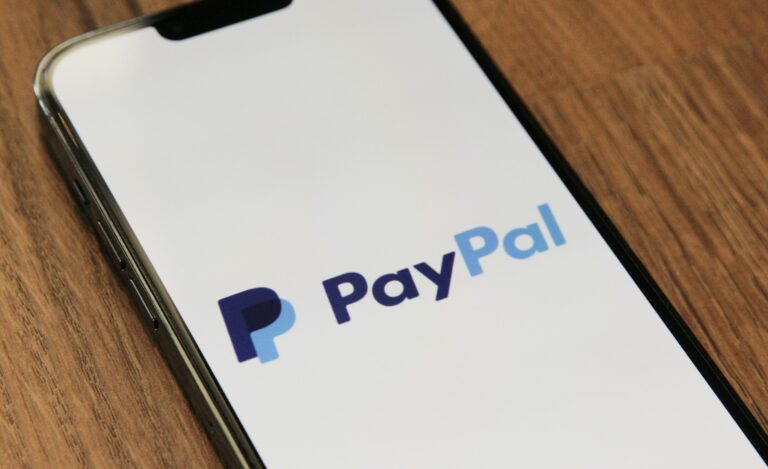If you’re running any kind of subscription billing business or direct response marketing operation, what just happened with Amazon should be your biggest wake-up call yet. The FTC didn’t just win their case against Amazon – they secured the largest settlement in FTC history, and it’s about to change everything for how subscription payment processing and recurring billing models operate.
Here’s what just went down: Amazon agreed to pay $1 billion in civil penalties plus $1.5 billion in consumer refunds – a total of $2.5 billion – to settle allegations that they tricked millions of people into Prime subscriptions and made cancellation nearly impossible. But this isn’t just about Amazon getting slapped with a massive fine. This settlement is now the blueprint for what regulators expect from every subscription business.
The Settlement Details That Every Merchant Needs to Know
The FTC’s settlement with Amazon isn’t just about money – it includes specific requirements that are essentially becoming the new compliance standards for subscription businesses:
Clear Decline Options Required
Amazon can no longer use misleading buttons like “No, I don’t want Free Shipping.” They must provide clear, conspicuous ways for customers to decline subscriptions. Translation for your business: your opt-out language needs to be crystal clear, not manipulative.
Full Disclosure Requirements
Amazon must clearly disclose all material terms during enrollment – cost, billing frequency, auto-renewal status, and cancellation procedures. This isn’t buried in fine print anymore; it’s front and center.
Cancellation Parity Mandate
Here’s the big one: Amazon must provide easy cancellation using the same method customers used to sign up. If they signed up online, they can cancel online. If it was one-click signup, it needs to be one-click cancellation.
Third-Party Monitoring
Amazon has to pay for independent monitoring of their compliance. This shows how seriously regulators are taking enforcement moving forward.
What Amazon Actually Did Wrong (And Why It Matters for Your Business)
The FTC’s investigation revealed some pretty damning internal communications at Amazon. Employees called subscription practices “a bit of a shady world” and referred to unwanted subscriptions as “an unspoken cancer.” The original FTC complaint filed in 2023 detailed these practices extensively.
Amazon’s specific violations included:
- Using confusing interfaces to trick people into Prime enrollment
- Creating the infamous “Iliad Flow” cancellation process (named after Homer’s epic about a long, difficult war)
- Making signup easy (two clicks) while cancellation required multiple pages and fifteen options
- Burying subscription terms in fine print
- Using retention offers to prevent cancellation completion
Sound familiar? A lot of subscription businesses have been using similar tactics, thinking if Amazon does it, it must be okay. Well, that just cost Amazon $2.5 billion.
The Broader Impact: Why 76% of Subscription Sites Are Now at Risk
A July 2024 FTC study found that nearly 76% of subscription sites use at least one dark pattern. With this Amazon settlement setting the new compliance bar, that’s a lot of businesses that need to clean up their act immediately.
The FTC tried to implement updated Negative Option Rules, but those were vacated by an appeals court. However, this settlement shows they don’t need new rules – they’re using enforcement actions to set the standards, and those standards just became very expensive to ignore.
PROTECT YOUR SUBSCRIPTION REVENUE
What This Settlement Means for Your Subscription Business
The New Compliance Requirements (Based on Amazon Settlement)
-
- Transparent Enrollment Process
- Clear, conspicuous subscription disclosures
- No misleading decline buttons or confusing language
- Separate consent checkboxes with plain English explanations
- Upfront disclosure of all costs and billing cycles
- Easy Cancellation Requirements
- Same-method cancellation (online signup = online cancellation)
- No more complex multi-step cancellation processes
- Clear cancellation confirmation
- No misleading retention offers during cancellation
- Honest Marketing Standards
- No disguising subscriptions as one-time purchases
- Clear billing frequency and amount disclosures
- Transparent auto-renewal notifications
- Accurate promotional material representations
What This Means for Your Business
The New Golden Rule: Make Canceling as Easy as Signing Up
This is the big one. If someone can sign up for your service in two clicks, they should be able to cancel in two clicks. It’s that simple.
I know what you’re thinking – “But our retention offers work!” Here’s the thing: you can still do retention, but you can’t make it part of the cancellation process. Offer people incentives to stay, sure, but don’t make them jump through hoops just to cancel. Complicated cancellation process = more chargebacks! If your subscription cancellation process is harder to navigate than submitting a chargeback, then customers will often just file a chargeback and move on.
Your Consent Game Needs to Be Strong
Gone are the days of burying subscription terms in tiny print or using pre-checked boxes. The FTC wants to see clear, obvious consent. Think separate checkboxes with plain English explanations like “Yes, I want to be billed $29.99 every month until I cancel.”
Stop Playing Hide and Seek with Your Terms
If you’re selling a subscription, act like it. Don’t try to disguise it as a one-time purchase and hope people don’t notice the recurring charges. Be upfront about what people are signing up for.
Branding is becoming very important for online products. Single product pages with no customer attachment and hidden subscriptions lead to losses from chargebacks and refunds. Customers are searching reviews and the negative ones are costing you sales!
Industry-Specific Compliance Actions
Direct Response Marketing Payment Compliance
Those “limited time offers” and countdown timers aren’t going away, but you need to be extra transparent about ongoing billing. If someone could reasonably think they’re making a one-time purchase when it’s actually automatic subscription billing, you’re now in violation of the new compliance standards.
Subscription Payment Processing Services
Even if your software is legitimately valuable, you can’t trick people into paying for it. Make sure your free trials are actually free, and when they convert to paid subscriptions, make it crystal clear what’s happening with their payment method and billing cycle.
Recurring Billing and Subscription Box Services
Stop making people create accounts just to cancel their subscription billing. And don’t make people call during “business hours” to cancel when they signed up online at 2 AM with their credit card.
Immediate Action Items for Subscription Businesses
The Emergency Audit
Don’t wait – audit your subscription practices today:
- Compare your signup vs. cancellation processes – count clicks, pages, and steps for both
- Review your marketing materials – ensure subscription terms are prominent and clear
- Test your cancellation flow – have someone unfamiliar with your business try to cancel
- Check your retention offers – make sure they don’t prevent or complicate cancellation
Fix These Common Violations Now
Pre-checked subscription boxes – Remove them completely
Buried billing terms – Move subscription details to prominent placement
Complex cancellation processes – Simplify to match your signup process
Misleading marketing – Ensure all materials clearly indicate subscription nature
The Real Business Impact: Why Compliance Is Profitable
The Cost of Non-Compliance Just Got Real
Amazon’s $2.5 billion settlement shows the financial risk of deceptive practices. But beyond regulatory fines, non-compliant practices lead to:
- Higher chargeback rates (customers dispute rather than navigate complex cancellations)
- Negative reviews and damaged brand reputation
- Increased customer acquisition costs due to poor word-of-mouth
- Payment processor account termination risks
Yeah, You Might Lose Some Revenue Initially
Let’s be honest – if your business model depends on tricking people or making it hard to cancel, you’re going to see some impact when you clean things up. But here’s the thing: that revenue was never really sustainable anyway.
But You’ll Probably Make More in the Long Run
Companies with transparent practices tend to have:
- Higher customer satisfaction
- Better word-of-mouth marketing
- Lower churn rates (people who understand what they’re buying are happier customers)
- No expensive legal battles with the FTC
What’s Coming Next: The New Regulatory Reality
This Amazon settlement isn’t the end – it’s the beginning of a new era of subscription regulation. With $2.5 billion proving that dark patterns have serious consequences, expect:
Increased Enforcement Activity
The FTC now has a clear precedent and $2.5 billion worth of proof that subscription violations are profitable to pursue. Other subscription businesses using similar tactics should expect regulatory scrutiny.
State-Level Action
With federal enforcement proving successful, expect state attorneys general to launch their own subscription compliance investigations and enforcement actions.
Payment Processor Requirements
Payment processors and merchant account providers will likely implement stricter requirements for subscription businesses, using this settlement as their compliance baseline.
Industry Self-Regulation
Smart businesses will proactively adopt Amazon settlement standards to avoid becoming the next target.
The Bottom Line: Transparency Is Now Mandatory
The subscription economy isn’t going anywhere – people love the convenience and businesses love the predictable revenue. But the days of using psychological tricks and complicated processes to trap customers have come to an end.
The companies that are going to thrive are the ones that figure out how to build genuinely valuable subscription services that people actually want to keep paying for. The ones still trying to trick customers into subscriptions? They just saw what that costs.
If you’re running a subscription business, use this Amazon case as a wake-up call. Audit your practices, fix the sketchy stuff, and start building a business model based on value instead of confusion. Your customers (and your legal team) will thank you.
If Amazon – with unlimited resources and top legal teams – couldn’t defend these practices, what makes anyone think smaller businesses can? The choice is simple: adopt transparent practices now, or risk becoming the next multi-million dollar regulatory settlement.
This settlement isn’t just Amazon’s problem – it’s every subscription business’s new reality. The question isn’t whether you’ll need to comply with these standards, but whether you’ll do it proactively or wait for the FTC to make the choice for you.
Need Help Ensuring Your Subscription Business Meets the New Amazon Settlement Standards?
The regulatory landscape around subscription billing and direct response marketing is getting more complex every day. Between FTC dark patterns enforcement, payment processor requirements, and state-level regulations, staying compliant while maintaining profitable recurring billing operations isn’t easy.
That’s where DirectPayNet comes in. Our payment processing experts specialize in helping direct response marketers and subscription businesses navigate the compliance maze while optimizing their payment systems for maximum approval rates and customer retention.
Our services include:
- FTC enforcement action preparation and defense
- Dark patterns assessment and remediation
- Subscription billing best practices implementation
- Payment processor compliance requirements
- Merchant account setup for high-risk subscription models
- Recurring billing optimization strategies
- Direct response marketing payment solutions
- Regulatory change monitoring and adaptation
Don’t wait for a regulatory wake-up call. Reach out to one of our specialists today and ensure your subscription billing practices are bulletproof.









